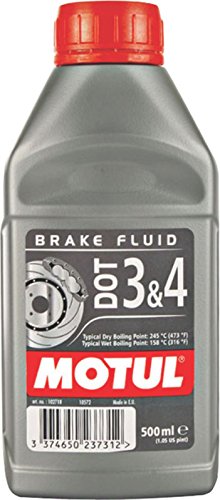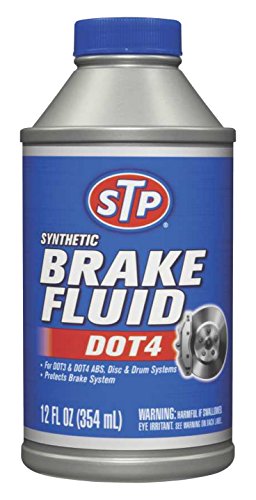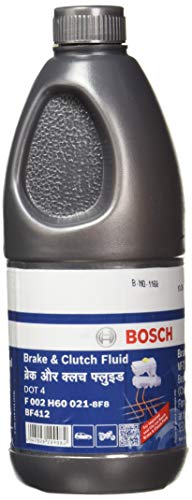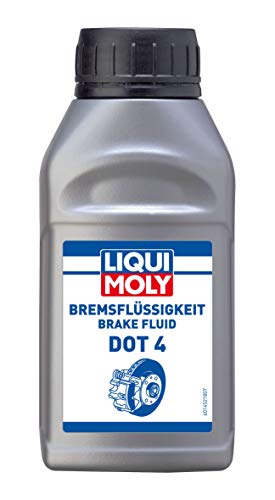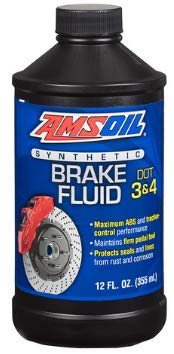Best Brake Fluids
Brake fluid is paramount to the safety of your vehicle as it is responsible for transferring the force generated by applying the brakes into the pressure to the front and rear brakes for stopping the vehicle. You need to check the brake fluid level and test its condition annually. You must replace your brake fluid if required for ensuring your safety. Remember, a good quality brake fluid gives you the confidence to drive your vehicle fearlessly. This article briefs you about the top brake fluids that ensure smooth and efficient braking for safe and pleasurable driving.
1. Motul Dot 3 and 4 Brake Fluid
Motul dot 3 and 4 brake fluid features a high boiling point of 245°C that assists in effective and efficient braking even in the extreme high-temperature conditions. It avoids vaporization within the braking system lines and ensures the excellent hydraulic transfer of braking force. It has a high wet boiling point: 158°C that ensures it keeps on working for a longer duration. It maintains low levels of compressibility for consistent brake pedal feel even in different environmental conditions with varying temperatures. It is a good quality fully synthetic brake fluid that shows vehicle compatibility with all bikes.
It decreases oil consumption and thus provides fuel efficiency. It is a polyglycol based brake fluid that absorbs the moisture from the hydraulic brake system. It provides superior protection for the gearbox and boosts the engine start-ups. This brake fluid is ideally suited for all types of hydraulic actuated brake and clutch systems that fulfill the DOT 3 and DOT 4 manufacturers’ recommendations.
2. Waxpol Dot 4 Brake & Clutch Fluid
This clutch and brake fluid from Waxpol contains blending high-boiling solvents that help keep your braking system in good shape. It is non-reactive to metal parts in the brake hence highly effective.
The oil ensures safe driving in both hot and cold conditions. You can use it with either drum or disc brakes and in vehicles with ABS systems.
The fluid is also suitable to use in hydraulic clutch systems.
3. STP - 17246US Brake Fluid
STP brake fluid is engineered specifically for delivering enhanced performance in high-temperature braking systems. Its unique formulation provides reliable braking power and enhances its longevity by increasing the dry boiling point. Its unique formula is designed for ensuring outstanding performance from drum or disc brake systems in cars as well as trucks. The level of the brake fluid reduces with the wearing of brake pads.
It provides superb protection against vapor lock induced brake failure. It also assists in preventing corrosion caused by moisture in the brake system. It maximizes the braking performance and increases fluid life by maintaining a constant viscosity under a wide range of extreme hot and cold temperatures.
4. Bosch Transmission Mechanism Brake Fluid F002H60021
Bosch brake fluid employs an efficient transmission mechanism for providing superior braking performance. It maintains optimal viscosity even under severe temperature conditions, including extreme hot and cold temperatures. It is a safe brake fluid that possesses higher wet and dry boiling points for newer generation vehicles. It meets the DOT 4 standards in compliance with IS:8654-2001. It is suitable for both two-wheelers as well as four-wheelers vehicles.
It is designed to provide superior protection against vapor formation due to its high boiling point. The vaporization poses risks of increasing compressibility in the braking system that negates the hydraulic transfer of braking force. It provides effective protection against corrosion against the moisture and thus protects the metallic components, including ABS control valves, calipers, wheel cylinders, and master cylinders.
It provides effective lubrication of the moving hydraulic components. In addition to serving as brake fluid, it is also used in the clutch systems.
5. Liqui Moly DOT 4 Brake Fluid
Liqui Moly brake fluid is a 100% synthetic brake fluid that is based on glycol ether esters, alkyl polyglycols, and glycol ethers. It features a high boiling point of 260 degrees celsius and a wet boiling point of 155 degrees celsius. It helps in efficient braking even in extreme temperature conditions. It prevents oxidation at higher temperatures and reduces oil consumption. It comprises inhibitors that prevent corrosion and provide effective protection of metallic components in the hydraulic brake system such as ABS control valves, master cylinders, calipers, and wheel cylinders.
It extends the operating life of hydraulic brake and clutch components. It absorbs the moisture and ensures safe braking over a long period of usage. The presence of special moisture scavengers prevent moisture formation and helps in maintaining the lower level of compressibility even with different temperature conditions. It meets the DOT 4 standards.
6. Amsoil DOT 3 & 4 Synthetic Brake Fluid
Amisol synthetic brake fluid provides a superior wet boiling point that helps in fighting against the water contamination and prevents moisture in the lines of the braking system. It serves as an efficient hydraulic fluid that helps in smooth power transferring, preventing corrosion, and lubricating the brake system. It maintains a consistent and steady viscosity over a wide range of extreme temperature conditions. Due to its stable viscosity, it flows smoothly at the high pressures generated in the advanced automotive brake system for providing solid and reliable braking.
It maximizes traction-control and ABS responsiveness and delivers exceptional superior cold-weather performance due to its low viscosity (817 cSt). It is a high-performance brake fluid that meets or exceeds the DOT 3, 4, and 5.1 specifications, and this makes it an ideal fluid for a wide range of applications. It features ultra-high boiling points of 410ºF (wet) and 580ºF (dry) that assists in maintaining low compressibility even during the most severe temperature conditions, including very hot as well as very cold temperatures.

